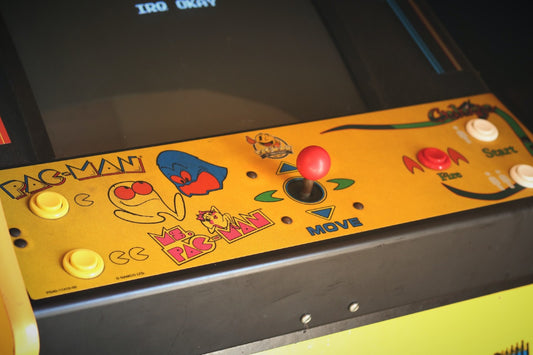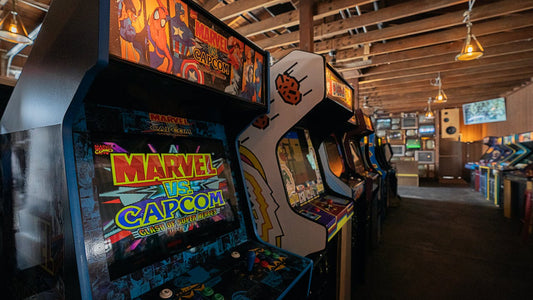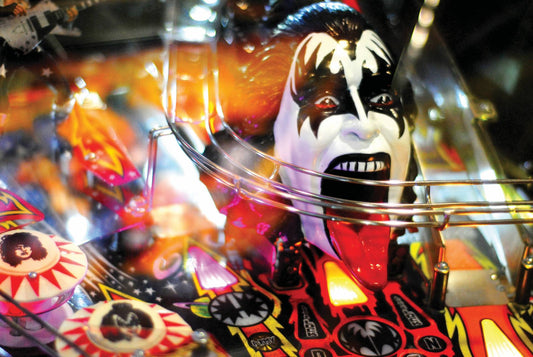GameCube
Nintendo’s GameCube was released in 2001 and competed with the likes of Sony’s PlayStation 2 and Microsoft’s Xbox. Succeeding the N64, the famed console did not outsell it.

One element that was developed with the GameCube was Nintendo’s upgrade from cartridges to discs. The company did this through using ‘Optical Discs’, which many have said actually hindered the console as it could only play these and not the usual DVDs and CDs, whereas other competing consoles could do this.
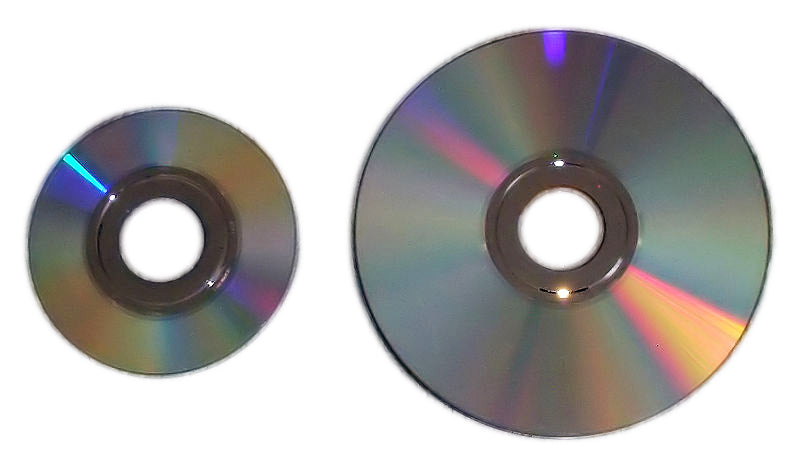
Adapted to the modern day Much like all of our custom Arcade Machines, the GameCube also supported online gaming. Though this was only for a limited number of titles and it shows that Nintendo were changing to modern day standards in gaming which was further achieved through either broadband or a modem adaptor. Other forms of compatibility included a Game Boy adaptor to play Game Boy, Game Boy Colour and Game Boy Advance games; as well as directly connecting to the Game Boy Advance via the link cable. Allowing players to have dual screen and use the GameCube controller to play their Game Boy Advance games.
Reception for the system was overall quite positive as it is widely praised for the controller, extensive software library and high quality of games. In total, the system sold 21.74 million units worldwide until its discontinuation in 2007.
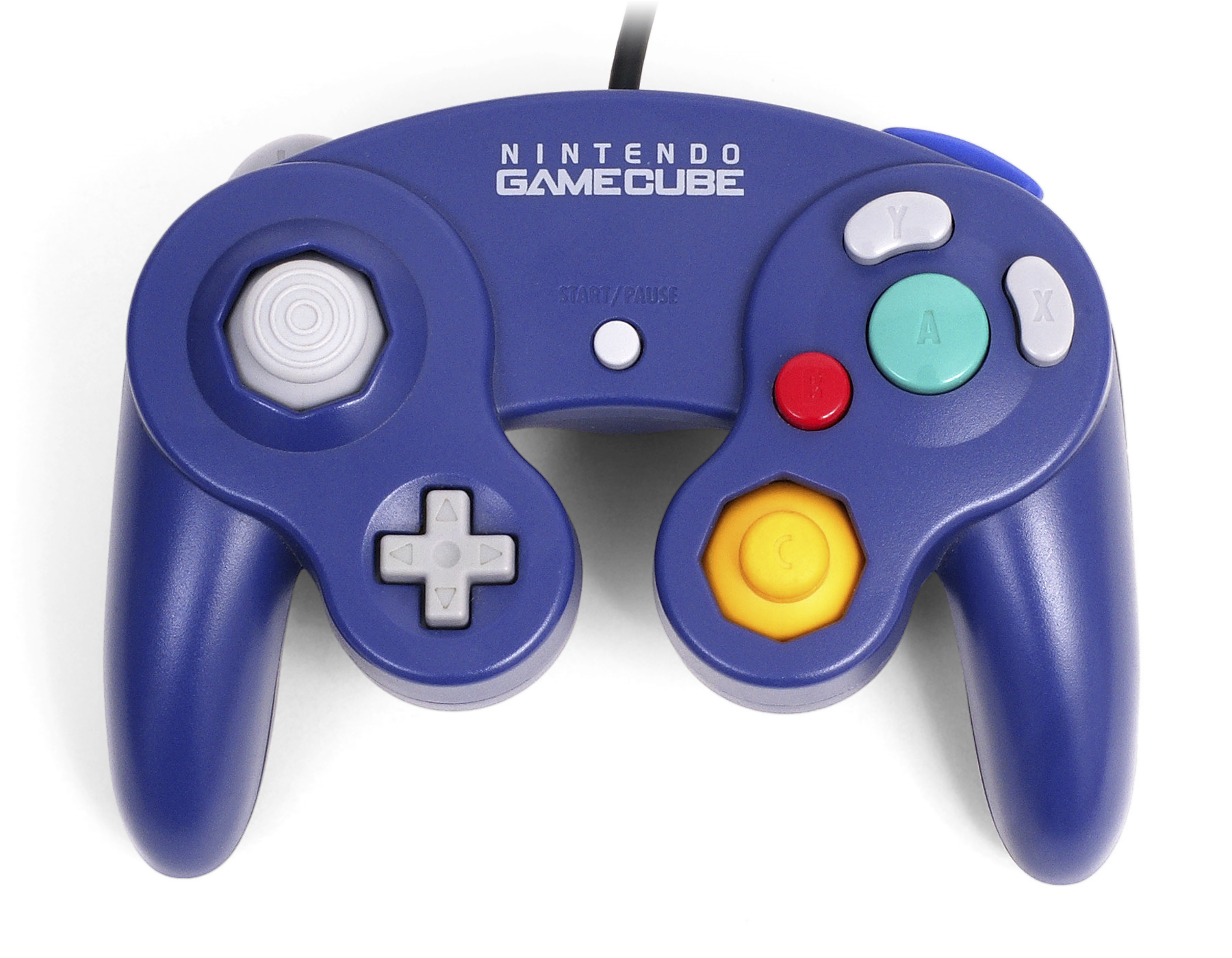
The history of the GameCube begins with the pairing of Nintendo and Art X, who had previously worked together on the graphics chip for the N64. Following the success, they started working on ‘Project Dolphin’, which was officially announced in 2000.
Upon North American release, the console had a library of 15 games including hit titles such as Luigi’s Mansion and Star Wars Rogue Squadron: Rogue Leader. With no Mario platformer available at time of launch, the GameCube was the first Nintendo console to do this in their console history.

Interestingly, during development it has been found that Nintendo had started to play with creating early motion controls for the GameCube. Though this never came about for this particular console, the GameCube’s predecessor – the Nintendo Wii – featured these.
Upon Japanese launch 500,000 units were distributed amongst retailers and sold relatively quickly, as well as only having a total of three games available at release. To improve on their sales figures in America, the North American Launch was pushed back. This gave Nintendo time to produce more consoles and game releases. When the North American launch eventually took place, 700,000 units had been shipped to retailers.
External memory cards were available to purchase for the system and came in three different sizes (4MB, 16MB and 64MB); however many found issues with the compatibility of some games. Though the Game Cube is primarily compatible with other Nintendo consoles of the time (Game Boy and Game Boy Advance), early Nintendo Wii consoles are fully backwards compatible with the console. Further coming with GameCube memory card slots as well as controller ports.
The GameCube’s highly-praised controller was built on the criticism of previous. Named the ‘handle bar design’, Nintendo decided to remove the third section from the N64 controls. Designed to prevent ‘Nintendo Thumb’, the rubber analogue sticks prevented discomfort. Two analogue sticks featured on the modern design, optimising 3D control.

Nintendo created the first, first party wireless controller in 2002 with the WakeBird. Though this didn’t come with other prominent features from the normal controller such as vibration feedback.
With the highly-praised console being a success in its own field, Panasonic released the Q, which was essentially a hybrid GameCube that could be used as a commercial DVD player. Discontinued in under two years after release, the Q had low sales and therefore only sold in Japan.

Featuring a library of over 600 games, Nintendo focused on their game franchises for this particular console. Their classic Mario and Zelda series’ modelled next to the modern Animal Crossing and Pikmin.

As well as Nintendo’s famous ‘first-party success’, the GameCube acted as the middle ground as the company reached out to 3rd party game manufacturers. Huge GameCube hits including the likes of Metal Gear Solid: The Twin Snakes, Resident Evil 4 and Star Wars Rogue Squadron II: Rogue Leader all generated a great profit. This was such a successful move for Nintendo that their previous rivals, Sega, offered tremendous support for the console; even allowing them to port their classic games including Crazy Taxi and Sonic Adventures 2 onto the console.
The reception to the console was generally very positive, praise included the modern controller and library of successful games. Despite this, the console only sold 22 million units (compared to the Xbox’s 24 million and PlayStation 2’s 153 million), even being outsold by its own predecessor – the N64.

